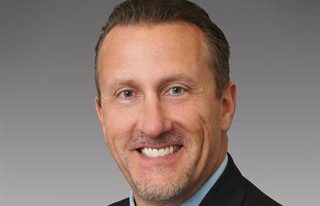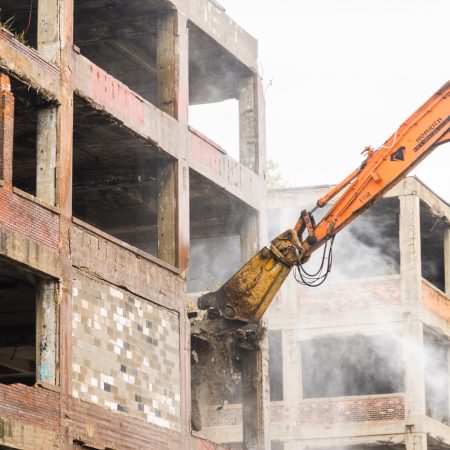US pursuit of third oil tanker intensifies Venezuela blockade
By Maya Averbuch, Eric Martin and Jennifer A. Dlouhy, Bloomberg News
The U.S. has pursued a third oil tanker off the coast of Venezuela, intensifying a blockade that the Trump administration hopes will cut off a vital economic lifeline for the country and isolate the government of President Nicolás Maduro.
The U.S. Coast Guard chased the U.S.-sanctioned Bella 1 on Sunday as it was en route to Venezuela. It boarded Centuries, a ship owned by a Hong Kong-based entity, on Saturday — the first non-sanctioned vessel to be targeted. Another very large crude carrier, the Skipper, was intercepted on Dec. 10.
The moves on three separate vessels represent the most concerted attempt to date to sever the financial links sustaining a government that Washington says is led by a drug-trafficking cartel, and one that it has also recently designated as a foreign terrorist organization. Maduro has so far withstood the onslaught, but the blockade is beginning to limit hard currency and to hurt an already battered economy.
State-owned Petróleos de Venezuela SA, known as PDVSA, ships most of its cargoes to China, usually through intermediaries using so-called dark-fleet tankers, older vessels with obscure ownership that ferry sanctioned oil from Venezuela as well as Iran and Russia. Imports of feedstock from Russia are also vital to dilute Caracas’ thick crude.
“Washington calculates that Maduro depends far more on oil exports than the US or China depends on his barrels,” said Bob McNally, president of Rapidan Energy Group. “With global balances loosening and prices falling, the U.S. judges it has growing leverage and is likely to intensify pressure on the Maduro regime.”
Washington’s campaign has caught the attention of oil traders, but Venezuela’s exports have dwindled over the years and now account for less than 1% of global demand. The market is also well supplied, and China has multiple alternative options. Oil prices advanced only marginally in early trade in Asia on Monday, with Brent crude climbing toward $61 a barrel.
Maduro has called the Trump administration’s recent moves — deadly strikes on boats allegedly carrying drugs, the authorization of the Central Intelligence Agency to conduct covert operations and Trump’s order to block tankers — a bid to take Venezuela’s oil and install a puppet government.
“This escalation and stronger enforcement point towards a decline in the volume of exports,” said Francisco Monaldi, an energy expert at Rice University in Houston. “These days are going to be critical.”
The Trump administration’s military deployment in the Caribbean is the largest in the region in decades. The weekend’s maritime offensives are aimed at signaling that all tankers in the waters around Venezuela are at risk of interdiction and seizure, according to a person familiar with this month’s operations, who asked not to be identified discussing deliberations that have not been made public.
U.S. Defense Secretary Pete Hegseth said the blockade of sanctioned oil tankers would remain in “full force,” according to a post on X on Dec. 20.
The U.S. Treasury imposed oil sanctions on Venezuela in January 2019, during Donald Trump’s first presidential term. Later, the Biden administration adopted a carrot-and-stick approach to try to reverse Venezuela’s democratic backsliding, granting a waiver to Chevron Corp. in 2022 that allowed it to resume oil operations.
This year, U.S. officials reissued its license after it expired, but sought to guarantee that the Houston-based firm pays no royalties or taxes in cash to the Venezuelan government. Chevron has said its “operations in Venezuela continue without disruption and in full compliance with laws and regulations applicable to its business, as well as the sanctions frameworks provided for by the U.S. government.”
Venezuela’s oil industry has seen a dramatic decline in recent years, but Maduro’s administration has weathered sanctions and the exodus of up to eight million Venezuelans.
The country’s oil production reached the government’s 1.2 million barrels per day target, Venezuelan Vice President and Oil Minister Delcy Rodriguez said on Saturday. Production fell to around 400,000 barrels per day after the 2019 sanctions, but rebounded in later years, said Clayton Seigle, a senior fellow at the Center for Strategic and International Studies in Washington.
Both ships intercepted over the weekend had Panamanian flags, though people familiar with the matter said a Chinese company holds title to the oil that was aboard the first ship, the Centuries supertanker. A White House spokesperson said the tanker was flying a false flag and carrying sanctioned oil.
“What they’re hoping for is a campaign of maximum pressure that will eventually make the regime collapse, without the need of putting boots on the ground,” said Dany Bahar, a senior fellow at the Center for Global Development in Washington. “They’re trying to create a credible threat that will make this structure of power collapse, or high-level military turn around and decide to stand up to Maduro, and say, ‘You have to leave.’”
A right-wing shift in recent elections in Latin America is deepening Venezuela’s diplomatic isolation. Argentina, Bolivia, Ecuador and others signed a statement over the weekend demanding Venezuela respect democratic processes.
Some leaders in the region have still been critical of the campaign. Mexican President Claudia Sheinbaum has said she opposes foreign intervention into sovereign nations, when asked about her stance on opposition leader Maria Corina Machado, the recipient of this year’s Nobel Peace Prize. Brazil’s President Luiz Inacio Lula da Silva said at Saturday’s Mercosur summit in his country that armed conflict in Venezuela would set “a dangerous precedent for the world.”
Maduro’s embattled government will have to reduce production quickly if it cannot export its oil as storage facilities are unable to hold much more crude.
(With assistance from Devika Krishna Kumar.)
©2025 Bloomberg L.P. Visit bloomberg.com. Distributed by Tribune Content Agency, LLC.


























